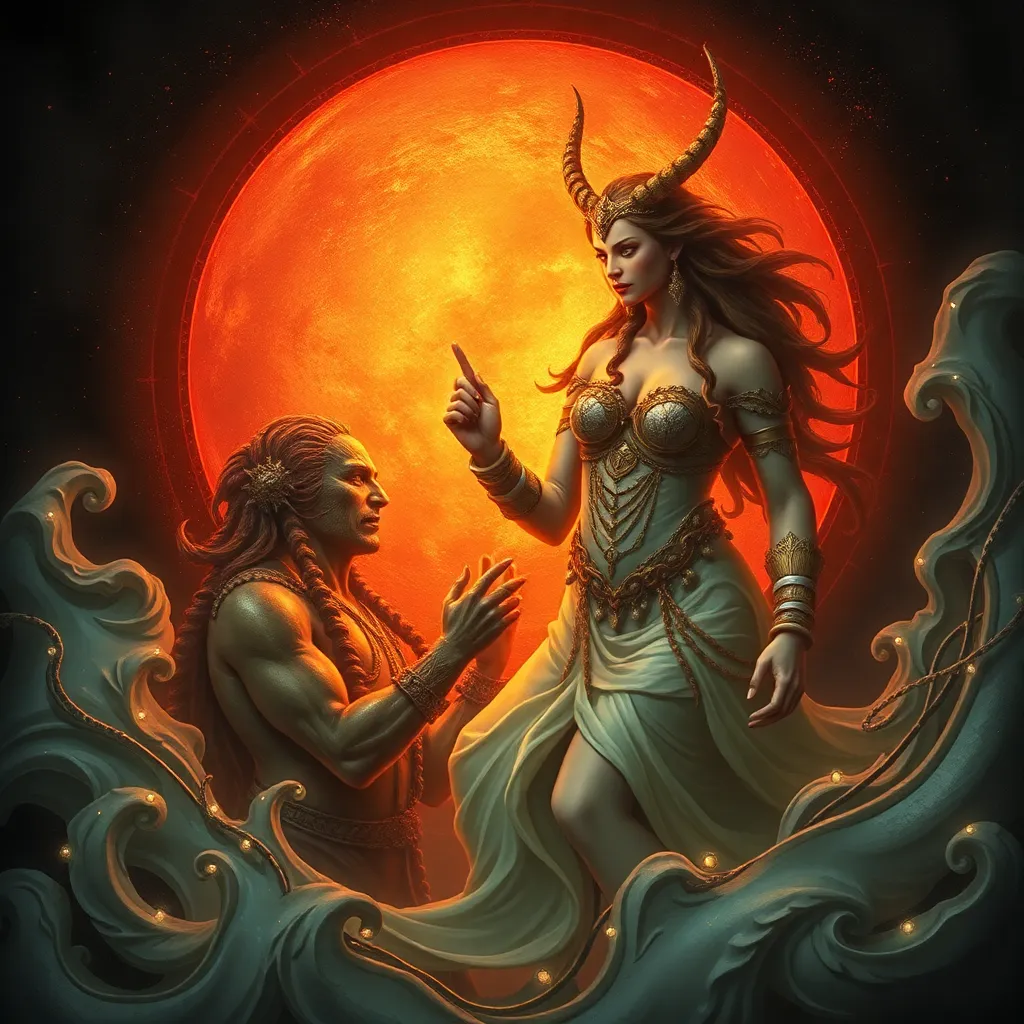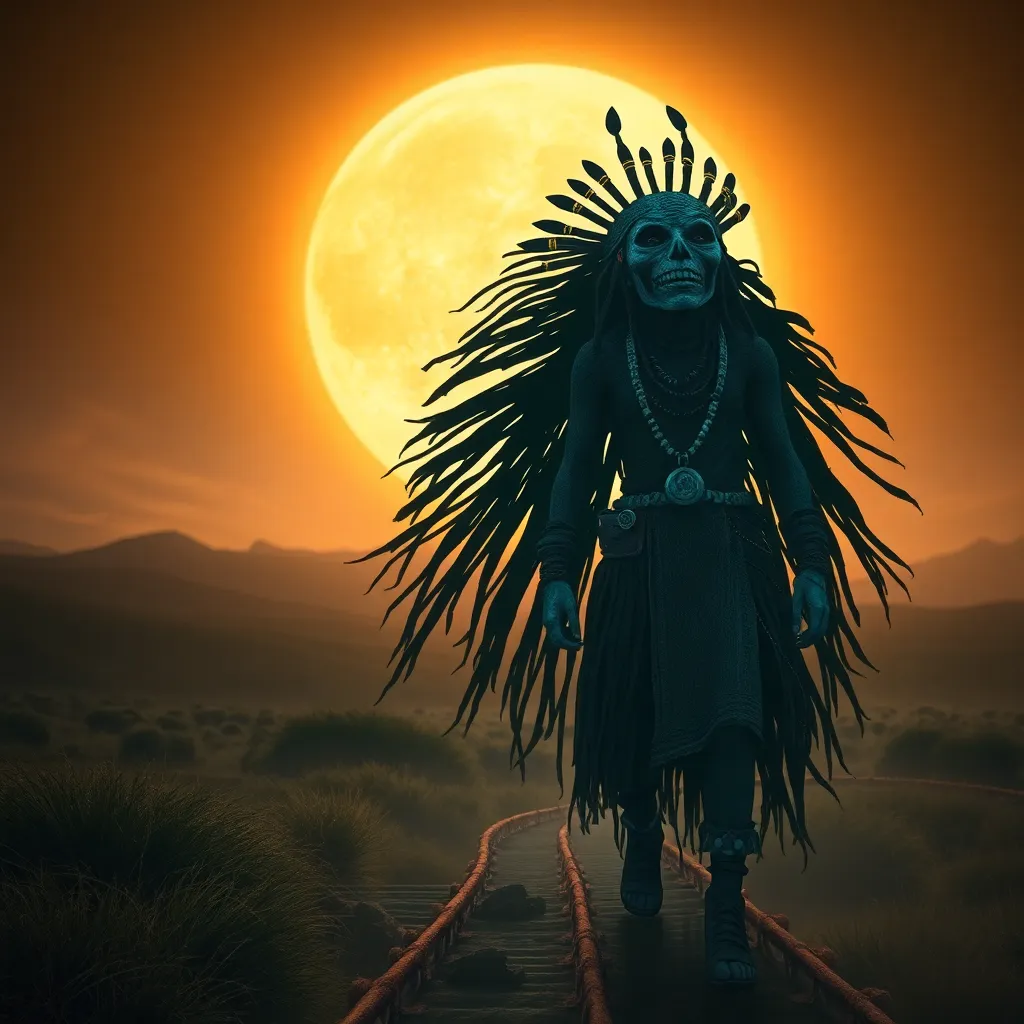The Lamia and the Hero: Examining the Interactions Between Lamia and Legendary Figures
I. Introduction
The Lamia myth, rooted in ancient Greek folklore, embodies a complex narrative of transformation, tragedy, and horror. Originally depicted as a beautiful woman, Lamia’s story takes a dark turn, reflecting themes of loss and vengeance. The hero archetype, prominent across various mythologies, represents bravery, resilience, and the battle against evil forces. This article aims to delve into the interactions between Lamia and legendary heroes, highlighting how these encounters illuminate broader themes of human experience.
II. The Mythological Context of Lamia
A. Historical background of Lamia in ancient mythology
Lamia’s origins can be traced back to ancient Greek mythology, where she is often portrayed as a figure cursed by the gods. In some accounts, she was once a beautiful queen, beloved by Zeus, who transformed her into a monster as punishment for her infidelities. This transformation serves as a cautionary tale about the consequences of desire and betrayal.
B. The transformation of Lamia: from a beautiful woman to a monstrous figure
The metamorphosis of Lamia from a stunning woman to a fearsome creature is a central theme in her myth. This transformation symbolizes the loss of innocence and the descent into madness, as Lamia becomes a child-eater, driven by her insatiable desire for revenge against those who wronged her.
C. Symbolism of Lamia in Greek mythology
Lamia symbolizes not only the archetype of the monstrous feminine but also the fears and anxieties surrounding motherhood and loss. Her character embodies the duality of beauty and horror, illustrating how societal perceptions of women can shift dramatically based on their actions and circumstances.
III. The Hero Archetype in Mythology
A. Characteristics of the hero in various mythologies
Heroes in mythology often share common traits, including:
- Courage and bravery in the face of danger
- A journey or quest that tests their limits
- The ability to overcome significant obstacles
- A moral compass that guides their actions
B. Common themes in hero narratives
Hero narratives frequently explore themes such as:
- The struggle between good and evil
- The importance of sacrifice
- The quest for identity and self-discovery
- The role of fate and free will
C. The role of heroes in confronting monstrous figures
Heroes often confront monstrous figures, symbolizing the battle against chaos and the restoration of order. This confrontation is not merely physical; it is also a psychological struggle, representing the hero’s fight against their fears and vulnerabilities.
IV. Notable Interactions Between Lamia and Heroes
A. Lamia and her encounters with heroes in Greek myths
1. Case study: The interaction between Lamia and Perseus
One notable interaction is between Lamia and Perseus. In some interpretations, Perseus, the slayer of Medusa, encounters Lamia during his journey. This encounter symbolizes the clash between the heroic ideal and the monstrous feminine, with Perseus representing order and rationality against Lamia’s chaotic nature.
2. Case study: The story of Lamia and Heracles
Another significant encounter occurs between Lamia and Heracles. In this myth, Heracles, known for his strength and bravery, confronts Lamia as part of his trials. The struggle between them exemplifies the hero’s journey, where overcoming the monstrous figure serves to elevate the hero’s status while simultaneously exploring the complexities of Lamia’s character.
B. Analysis of how these encounters reflect the hero’s journey
These encounters illustrate key stages of the hero’s journey, including:
- The call to adventure: Heroes are often compelled to confront monsters like Lamia, representing a challenge they must face.
- The confrontation: The battle between hero and monster serves as a crucial turning point in the narrative.
- The return: After overcoming the monster, the hero returns transformed, embodying new wisdom and strength.
V. Themes of Power and Vulnerability
A. The dynamics of power between Lamia and heroes
The interactions between Lamia and heroes reveal intricate dynamics of power. While heroes wield strength and courage, Lamia’s monstrous nature grants her a different kind of power—one rooted in fear and the ability to evoke deep-seated anxieties.
B. Exploration of vulnerability in both characters
Despite their apparent differences, both Lamia and the heroes exhibit vulnerability. For Lamia, her monstrous form is a manifestation of her profound loss, while heroes often grapple with their own fears and insecurities, highlighting the complexity of their character arcs.
C. Implications of these themes on the understanding of heroism and monstrosity
The interplay of power and vulnerability in these narratives challenges traditional notions of heroism and monstrosity. It suggests that heroism is not merely about strength but also involves understanding and confronting one’s fears, while monstrosity may arise from pain and suffering, rather than inherent evil.
VI. Psychological Interpretations of Lamia and the Hero
A. Freudian perspectives on the Lamia myth
From a Freudian perspective, Lamia can be seen as a representation of repressed desires and the fears associated with femininity and motherhood. Her monstrous nature reflects societal anxieties about female sexuality and power.
B. Jungian archetypes: the shadow and the hero
In Jungian psychology, Lamia represents the shadow—the darker aspects of the psyche that heroes must confront. The hero’s journey often involves integrating these shadow elements, leading to personal growth and transformation.
C. The symbolic representation of fear and desire in their interactions
The interactions between Lamia and heroes symbolize the complex relationship between fear and desire. Lamia’s monstrous form evokes terror, while her tragic backstory elicits empathy, illustrating the dual nature of human experience.
VII. Modern Reinterpretations and Cultural Impact
A. The Lamia in contemporary literature and media
In modern literature and media, Lamia continues to be a compelling figure, often reimagined to explore themes of empowerment, loss, and the complexities of female identity. Her character serves as a lens through which contemporary issues of gender and power can be examined.
B. Reimagining heroes in relation to monstrous figures
Today’s heroes are often depicted as flawed and relatable, reflecting a shift in how we view heroism. The interactions with monstrous figures like Lamia challenge heroes to confront their own weaknesses, making their journeys more relatable and meaningful.
C. The ongoing legacy of Lamia and hero narratives in popular culture
The legacy of Lamia and the hero archetype persists in popular culture, influencing various forms of storytelling. From films to novels, these narratives continue to resonate, offering insights into the human condition and the complexity of our fears and desires.
VIII. Conclusion
In summary, the interactions between Lamia and legendary heroes reveal profound insights into the nature of heroism, monstrosity, and the human experience. These myths serve as a mirror reflecting our fears, desires, and the complexities of our identities. The interplay between Lamia and heroes encourages a deeper understanding of the dualities within ourselves, reminding us that heroism often arises from the darkest places. As we continue to reinterpret these narratives, we find that the struggle between monstrosity and heroism remains a timeless and significant aspect of our cultural heritage.



